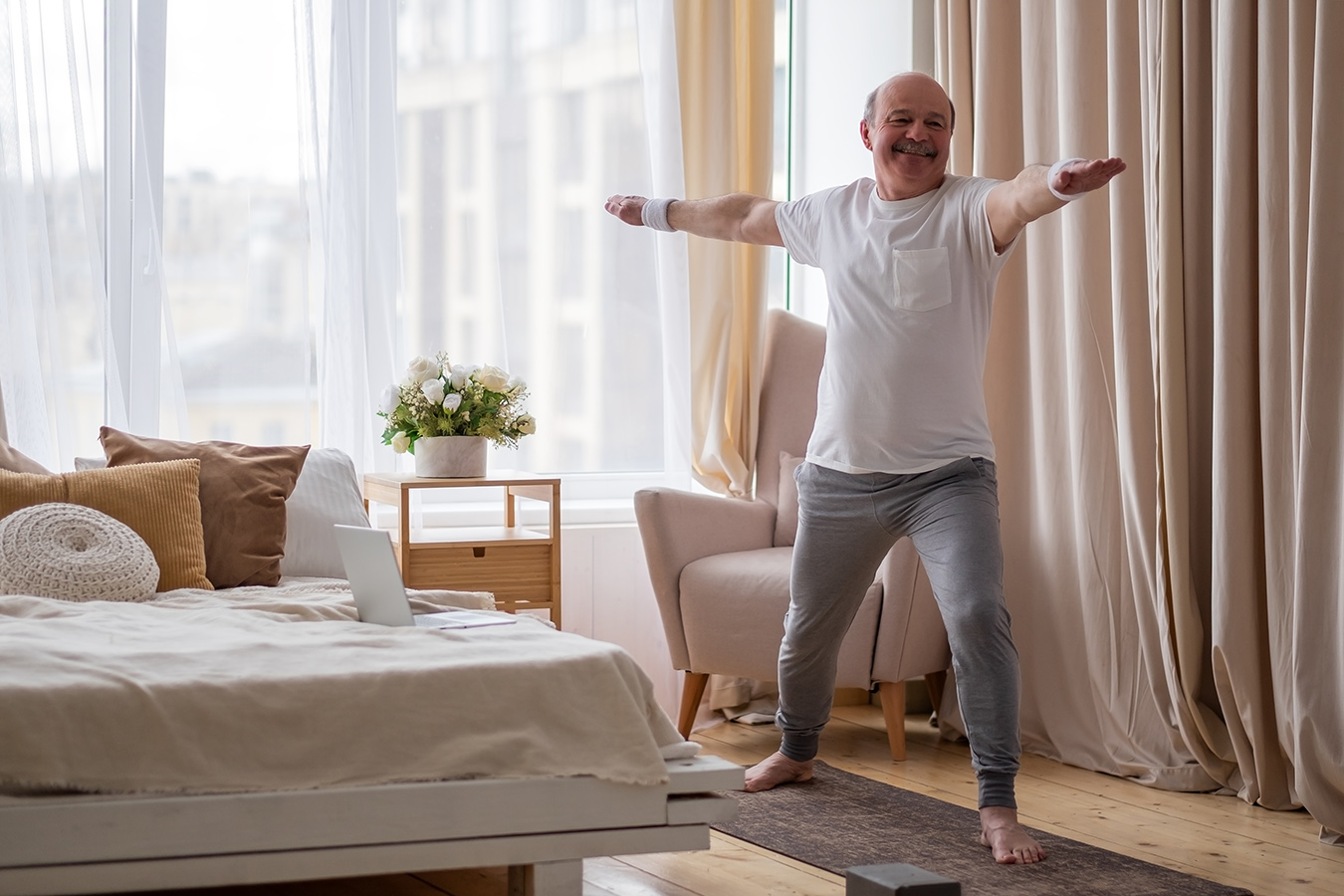How Can You Improve Your Balance?

We take it for granted, our ability to remain upright and steady on our feet. However, balance is a gift made possible by strength and coordination and our sense of body in space. We don’t recognize how precious it is until we notice a change in how we move.
“The ability to walk upright, to be cognizant of where your body is at any given time, is a result of several [unconscious] signals,” explains Abraham Andres Chileuitt, M.D., a sports neurologist with the University of Miami Health System. “People really don’t think about it. They become aware of it only when its function is affected.”
This awareness usually comes later in life, when we feel unsure on our feet.
Yet, that change doesn’t happen overnight.
The decline in our ability to balance is a slow process that begins in our 40s, long before most people worry about falling.
Research proves it. One 2017 study revealed how our loss of equilibrium happens gradually. About 775 women and men were asked to stand on one leg for a minute. People in their 30s managed to do so for 57 seconds; those in their 40s did it for 52 seconds.
However, maintaining the pose turned out to be more difficult for older participants. The 50-somethings lasted 44 seconds, 60-somethings about 40 seconds, and 70-somethings a mere 27 seconds.
This shouldn’t surprise us.
As Dr. Chileuitt explains: “As we age, our bodies change.”
And that change entails alterations in our reflexes, coordination, strength, depth perception, and vestibular system (a sensory system within the inner ear that regulates our spatial orientation).
What’s more, the bodies of older people tend to be less efficient in pumping blood, so that a sudden movement — getting up too quickly, say — may result in a feeling of balance loss.
Balance is more complex than we think.
Bonnie Levin, PhD., director of the Division of Neuropsychology and Cognitive Neuroscience and a neuropsychologist at UHealth, noted that balance and vestibular function are also linked to other cognitive skills such as memory and spatial processing.
In fact, research shows that individuals with cognitive impairment frequently have problems with balance.
But the good news is that interventions designed to improve balance are also associated with enhanced memory performance.
Dr. Levin
There is also evidence that balance control and anxiety are linked. It’s been suggested that balance, memory, and aspects of emotional well-being may share common neural circuitry.
All this may sound rather dire, but there is a good dose of hope. You can take specific steps to improve your balance if you’re willing to work at it.
Most people have an innate sense of balance.
We learn to walk a straight line and pull our pants on one leg at a time without a second thought. Those acts, however, involve a wondrous collaboration by our sensorimotor systems that, in turn, signal our brain to help us stay erect.
In addition to the process of aging, other factors can affect balance, including drugs or injury. Some people may suffer from certain inner-ear conditions, such as vertigo, and patients with Parkinson’s disease or multiple sclerosis, also face a greater risk of losing their balance.
But regardless of why someone may feel wobbly, balance remains an essential component of good health.
Stability, of course, helps prevent falls, a health threat in the older population.
Falls are the leading cause of injury or death for the 65-and-older set, according to the U.S. Centers for Disease Control and Prevention. In 2019, falls for this demographic resulted in 34,000 deaths, 3 million emergency room visits, and an estimated $50 billion in medical costs.
There is no one medical test used to test our balance. Physicians use different methods, but some simple tried-and-true assessments offer an at-home reality check. The balance-on-one-leg test provides a practical evaluation, as does trying to walk a straight line in a toe-to-heel gait.
Most likely, you’ll notice there’s plenty of room for improvement.
Here are other suggestions to slow, maybe even reverse, balance loss:
- Talk to your physician about any balance concerns you might have. It’s important to discount any health conditions that may affect your equilibrium. In addition, review your medications during your visit.
- Incorporate balance exercises into your exercise regimen. Drs. Levin and Chileuitt suggest tai chi and yoga, but you don’t necessarily need classes. Daily practice of routine poses — check out the internet for ideas — can improve balance. As always, check with your doctor before starting.
- Add flexibility and strength training, especially for the lower extremities. Strong calves, thighs, and hip muscles will help you maintain stability. Work on your core as well.
- Check your vision and hearing. If you don’t see well or can’t judge depth or distance, your risk of falling increases substantially. The same holds true with hearing loss.
- Don’t skimp on sleep. Even moderate sleep deprivation has been shown to have some of the same effects as alcohol intoxication.
- Start balance training early. “You can build balance,” Dr. Levin says. “You can improve it, but it’s best to build balance exercises into your routine. In other words, ideally, it should be a lifetime commitment.”

Ana Veciana-Suarez, Guest Columnist
Ana is a regular contributor to the University of Miami Health System. She is a renowned journalist and author who has worked at The Miami Herald, The Miami News, and The Palm Beach Post. Visit her website at anavecianasuarez.com or follow @AnaVeciana on Twitter.
Tags: aging, balance, Dr. Abraham Andres Chileuitt, Dr. Bonnie Levin, older adults, strength training
